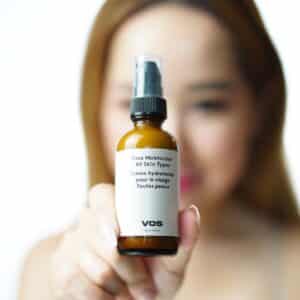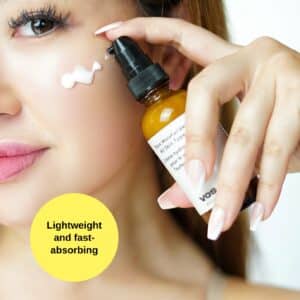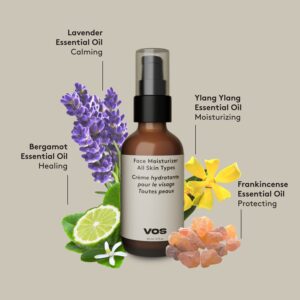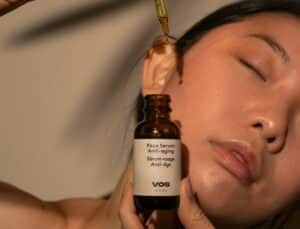Maintaining a consistent skincare routine plays an essential role in promoting skin health. Among the many products used daily, a face moisturizer is often the cornerstone of hydration, protection, and balance. Selecting the best face moisturizer for your daily skincare routine depends on multiple factors, including skin type, ingredients, and the climate in which you live.
In this guide, we’ll cover how to choose the right moisturizer, what to look for on labels, and how to incorporate it effectively into your routine.
Why a Face Moisturizer Is Essential
Moisturizers are formulated to improve the skin’s barrier function, maintain hydration, and prevent moisture loss. Whether your skin is oily, dry, or sensitive, skipping moisturizer can disrupt your skin’s balance.
Supports the Skin Barrier
The outermost layer of skin, the stratum corneum, functions as a barrier that protects against environmental elements. A good moisturizer reinforces this barrier, reducing the impact of irritants and allergens.
Regulates Oil Production
It’s a common misconception that oily skin doesn’t require moisturizing. In reality, withholding moisture can trigger an overproduction of sebum, leading to clogged pores and breakouts.
Improves Texture and Tone
Daily use of a suitable moisturizer helps improve skin texture by softening rough patches and promoting an even tone. Over time, this results in a smoother, more refined complexion.

Best Face Moisturizer for Your Daily Skincare Routine
Understanding your skin’s needs is the first step in selecting an effective moisturizer. Here’s what to consider.
Identify Your Skin Type
Before you buy any skincare product, determine your skin type. Common types include:
- Dry: Feels tight, may flake or crack.
- Oily: Appears shiny and may be prone to acne.
- Combination: Oily in some areas (usually the T-zone) and dry in others.
- Sensitive: Easily irritated by skincare products or environmental changes.
- Normal: Balanced, neither too oily nor too dry.
Read Ingredient Labels
When selecting the best face moisturizer for your daily skincare routine, focus on ingredients that align with your skin’s needs.
- Hyaluronic Acid: Helps retain moisture and plump the skin.
- Glycerin: A humectant that draws water into the skin.
- Ceramides: Strengthen the skin barrier and retain hydration.
- Niacinamide: Supports even skin tone and soothes inflammation.
- Dimethicone: Creates a barrier on the skin to prevent moisture loss.
For sensitive skin, avoid alcohols, fragrances, and harsh preservatives.
Types of Moisturizers and Their Benefits
Moisturizers can be categorized into creams, gels, lotions, and ointments. Each has its texture and benefits, suited to different skin types and preferences.
Creams
Creams are thicker and richer in consistency, ideal for dry or mature skin types. They provide long-lasting hydration and help combat dryness in colder climates.
Gels
Gel moisturizers are lightweight and water-based. They absorb quickly and are well-suited for oily or acne-prone skin. They offer hydration without leaving a greasy residue.
Lotions
Lotions are a middle ground—lighter than creams but more hydrating than gels. They work well for normal to combination skin and can be used year-round.
Ointments
Ointments are the most occlusive type of moisturizer. They are usually oil-based and are effective for extremely dry or compromised skin, particularly in harsh winter months.

How to Apply Moisturizer in Your Skincare Routine
Proper application enhances the effectiveness of a moisturizer. Follow these steps for the best results:
1. Cleanse Your Skin
Start with a gentle cleanser to remove dirt, oil, and impurities. Pat your face dry with a clean towel.
2. Apply While Damp
Moisturizer is most effective when applied to slightly damp skin. This helps trap water on the skin’s surface, boosting hydration.
3. Use the Right Amount
A pea-sized amount is generally enough for the entire face. Too much product can clog pores, while too little may not provide adequate moisture.
4. Gently Massage In
Use upward circular motions to apply the moisturizer, which can improve absorption and stimulate circulation.
Incorporating Moisturizer Into Your Morning and Evening Skincare Routine
Morning Routine
In the morning, your moisturizer should protect your skin throughout the day. Look for products that contain SPF or layer a sunscreen on top.
Suggested Morning Routine Order:
- Cleanser
- Toner (optional)
- Serum (if applicable)
- Moisturizer
- Sunscreen
Evening Routine
At night, the focus shifts to recovery and hydration. Choose a moisturizer with ingredients that support skin repair, such as peptides or ceramides.
Suggested Night Routine Order:
- Cleanser
- Toner or exfoliant (if applicable)
- Treatment serums or retinol
- Moisturizer
- Facial oil (optional for dry skin)
Common Mistakes to Avoid When Using a Face Moisturizer
Even with the best product, improper use can limit results. Here are frequent mistakes to avoid.
Skipping Moisturizer Due to Oily Skin
As mentioned earlier, oily skin still needs moisture. Opt for gel-based moisturizers that hydrate without increasing oil production.
Using the Same Moisturizer Year-Round
Your skin’s needs change with the seasons. In winter, thicker creams may be necessary. In warmer months, a lighter formulation is usually sufficient.
Ignoring the Neck and Jawline
The neck and jawline are often neglected but show signs of aging and dryness just like the face. Always extend your moisturizer to these areas.
Mixing Incompatible Products
Layering multiple active ingredients (like acids and retinol) with your moisturizer can cause irritation. Ensure that your routine is balanced and suited for your skin type.
Final Thoughts
Choosing the best face moisturizer for your daily skincare routine is not about buying the most expensive product, but about understanding your skin’s specific needs and selecting a formula that complements your lifestyle. Whether your skin is oily, dry, or sensitive, a good moisturizer helps maintain balance, improve texture, and protect your skin from environmental stressors.
By making moisturizer a regular part of your skincare routine, you support your skin’s health both in the short and long term. Take time to read product labels, test formulas, and adjust as your skin changes with age and season.




